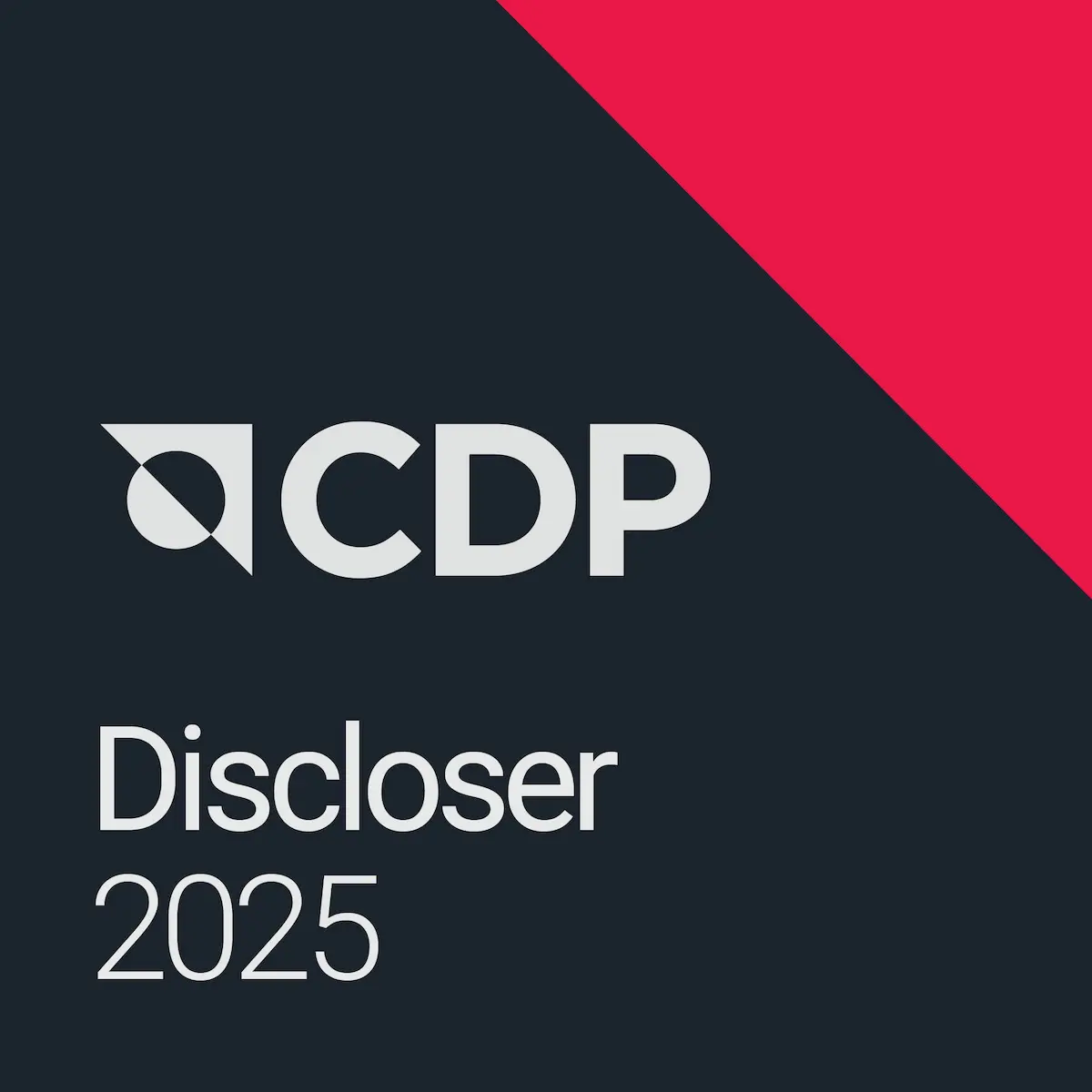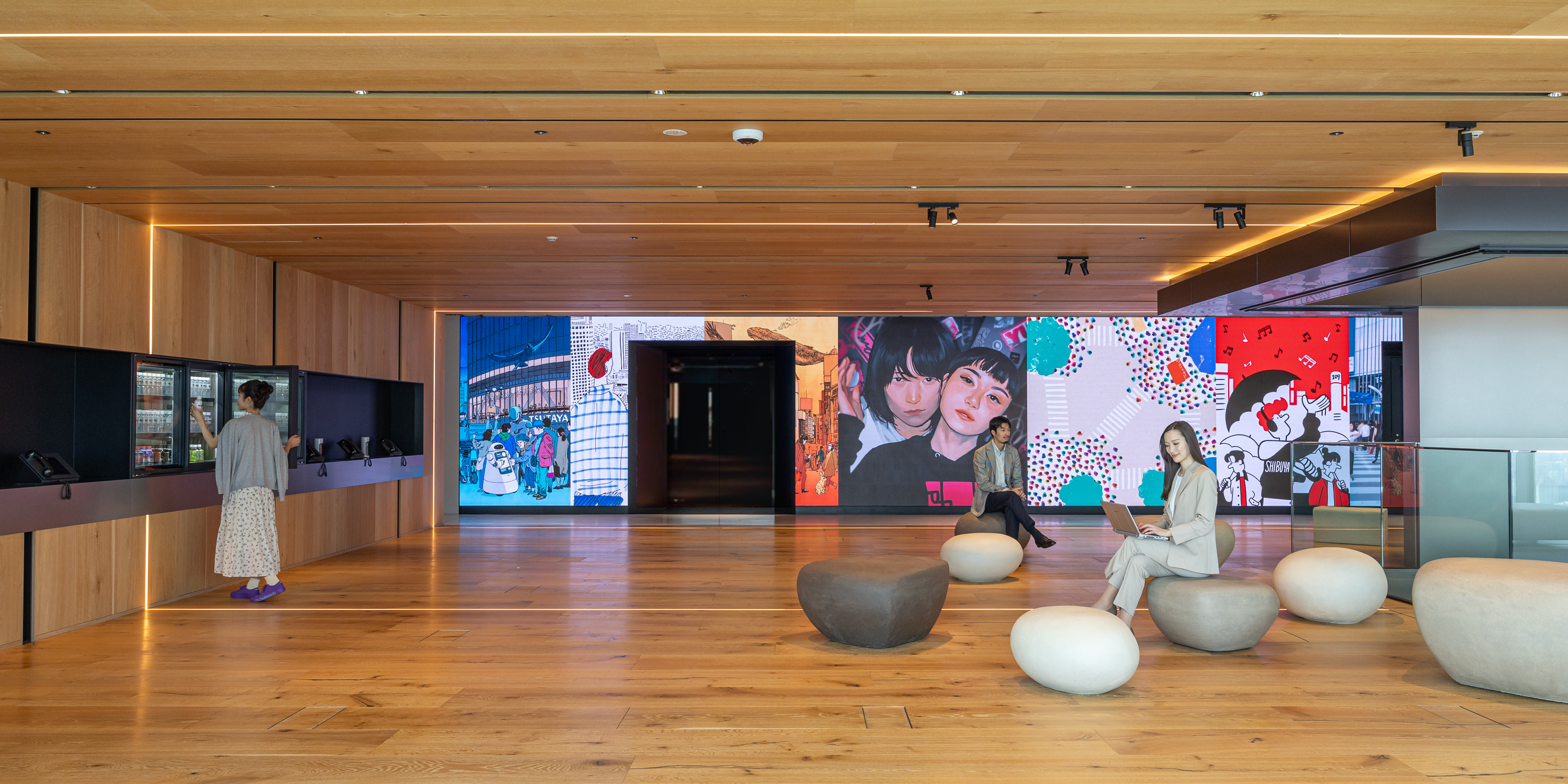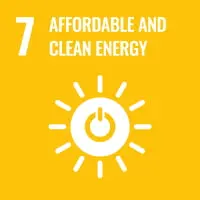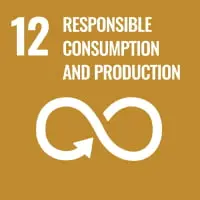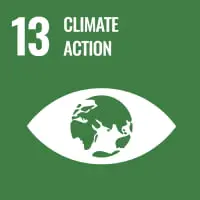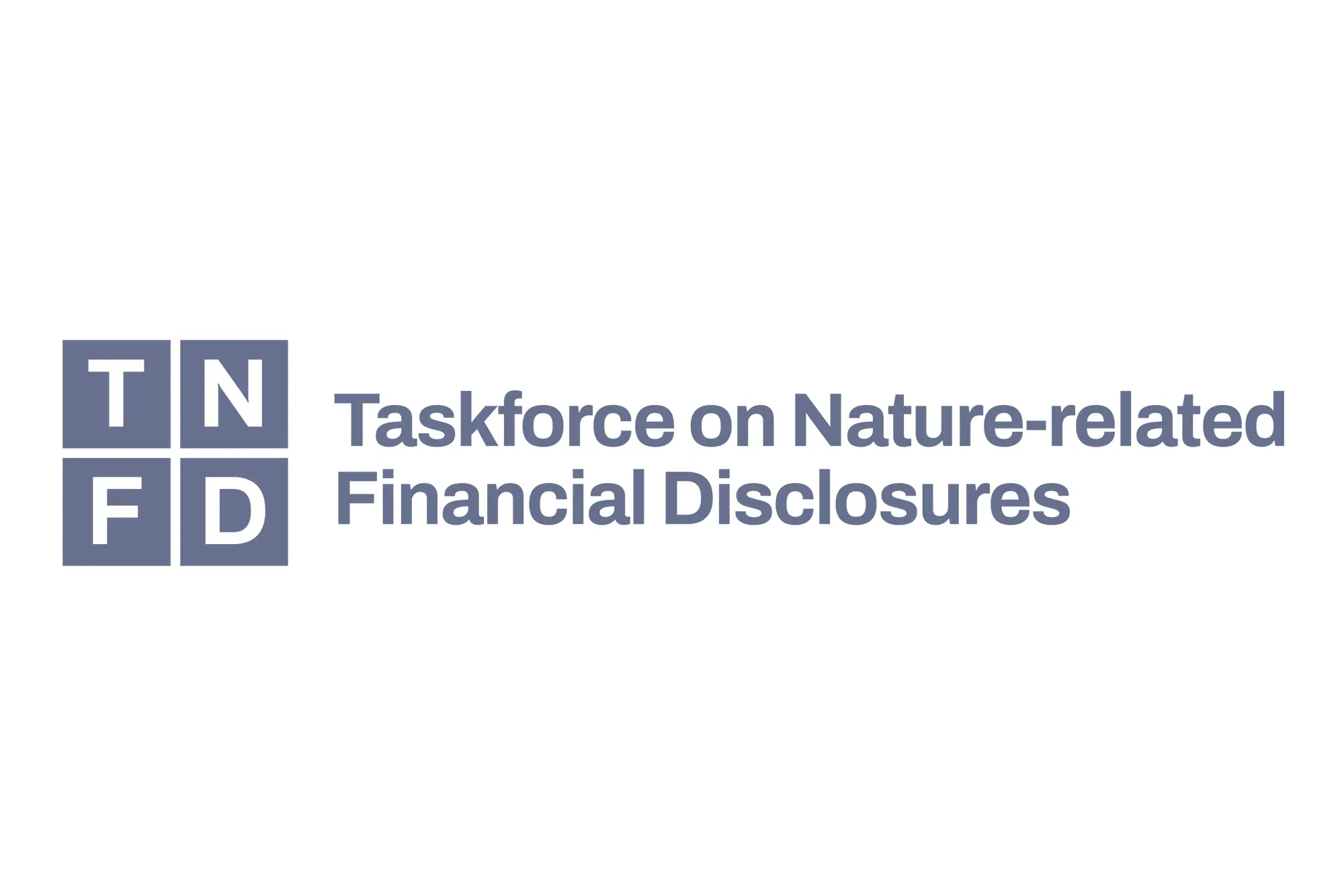SUSTAINABILITY
Disclosure Based on TCFD Recommendations
The issues caused by climate change become more serious with each passing year. Companies must understand the impact climate change has on their business and fulfill their social responsibility of reducing the impact of climate change.
MIXI announced its support for the TFCD* recommendations in June 2022 and discloses the following information based on those recommendations. We will continue to monitor the amount of greenhouse gas emitted by our business activities and disclose information when appropriate.

*TCFD: Task Force on Climate-related Financial Disclosures, a climate-related financial disclosure task force established by the Financial Stability Board (FSB) at the request of the G20
1.Governance
The CFO, director, and senior corporate officer in charge of the department responsible for sustainability operations is designated as the person responsible for responding to nature-related issues (hereinafter, the “Head of Sustainability”). The Sustainability Secretariat, an advisory body to the Head of Sustainability, reviews climate-related issues at least once a year and reports the results of the review to the Board of Directors through the Head of Sustainability at least once a year. The Sustainability Secretariat seeks advice from the Risk Management Committee as appropriate and conducts interviews with each department and Group company as necessary in order to identify and assess risks and opportunities related to climate change and to consider how to respond to them. The Sustainability Secretariat also conducts annual reviews of climate change-related risks and opportunities and the progress of response measures.
2.Risk Management
To determine their level of importance, the Sustainability Secretariat evaluates risks and opportunities related to climate change in terms of their likelihood of occurrence, impact, and availability of countermeasures. We define our timeframes as follows. The short term is as until the end of 2026, the medium term is until the end of 2030, and the long term is from 2031 on.Evaluations are conducted with reference to various scenarios from organizations such as the IEA and IPCC. Interviews are held with each relevant department and group company as necessary, and appropriate adjustments are made. In addition, countermeasures are formulated to address risks and opportunities, and the progress of these countermeasures is measured based on established indicators. When appropriate, advice on climate-related risks is sought from the Risk Management Committee in order to manage the climate-related risks in an integrated manner with other risks. Climate change-related risks and opportunities that require special attention are reported to the Board of Directors through the Head of Sustainability.
3.Strategy
➢ Assumptions for Scenario Analysis
Scenario analysis was conducted for the Digital Entertainment, Sports, and Lifestyle segments for the world as it may be in 2030. For this scenario analysis, three scenarios (global warming of 1.5°C, 2°C, and 4°C) were set by referencing various reports from organizations such as the IEA and IPCC. In the 1.5°C scenario, carbon taxes and other regulations are introduced to help realize a decarbonized society amidst an envisioned increasing demand for a response to climate change from various stakeholders, as well as new needs arising due to changes in society and lifestyles. In the 4°C scenario, the results of global warming are expected to increase the risk of disasters such as extreme rainfall and health risks such as heat stroke, with new needs related to adapting to climate change also expected to emerge.
➢Results for Scenario Analysis
Risks and opportunities based on each scenario were identified, and their importance to our businesses was evaluated according to their impact and likelihood of occurrence, then response measures were considered. The results of our analysis uncovered no significant business risks associated with climate change for affected businesses, but we will continue to understand and manage the impact of climate-related issues on our businesses through governance and risk management initiatives, while also working to seize opportunities.
The risks and opportunities identified in the 1.5°C and 4°C scenarios have been listed below.
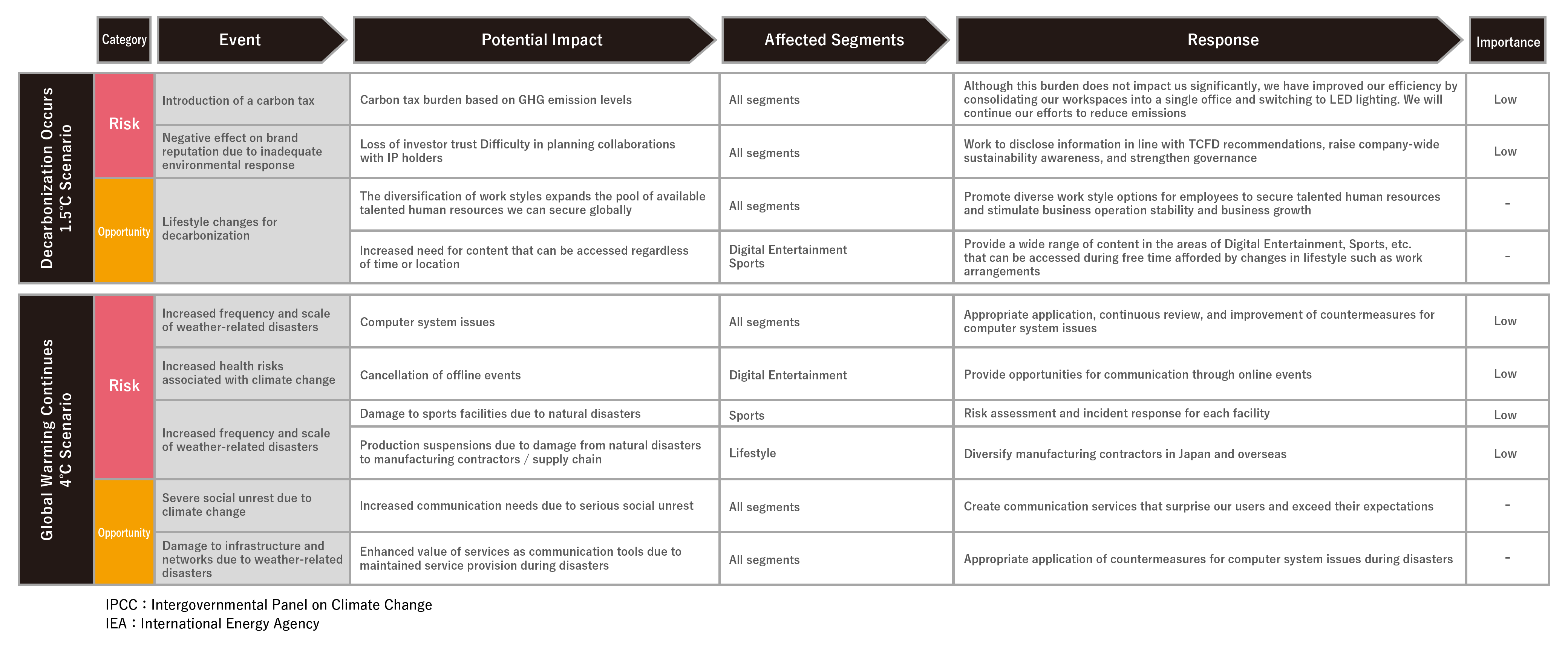
4.Indicators and Targets
We have calculated Scope 3 emissions in addition to our Scope 1 and 2 greenhouse gas emission calculations. These will serve as indicators for managing climate-related risks and opportunities. Our greenhouse gas emissions results are shown below.

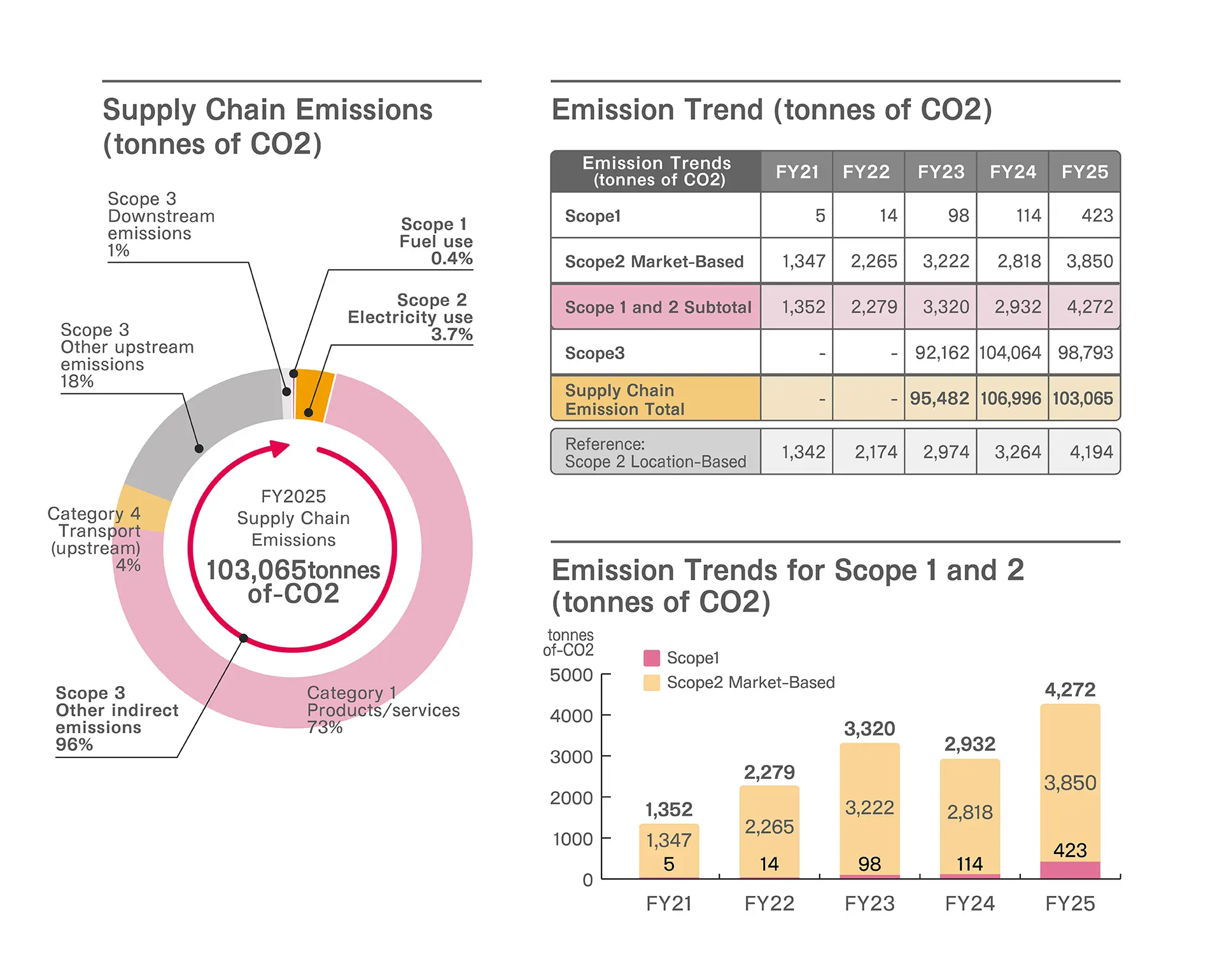
Details of Scope 1 and 2, including “Scope 1 and 2 emissions by segment (tons of CO2)”, “CO2 emissions per employee (tons of CO2/person)”, and “CO2 emissions per sales (tons of CO2/million yen)”, are shown in our ESG data.
We recognize that the impact caused by climate change poses risks to business operation, and we will continue to calculate emissions and strive to reduce emissions through energy conservation as well as the use of renewable energy and other efforts in each of our business segments.
CDP Questionnaire Response
Since 2022, MIXI has been responding to questionnaires regarding climate change published by CDP, an international non-profit organization. We adhere to TCFD recommendations for our disclosures, including those found in our securities reports.
